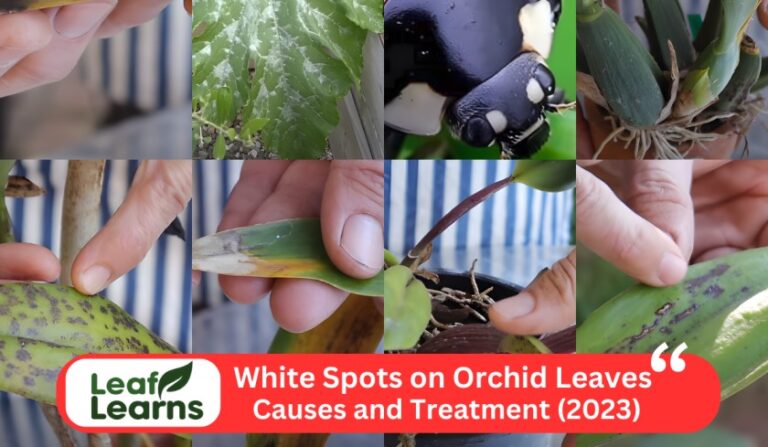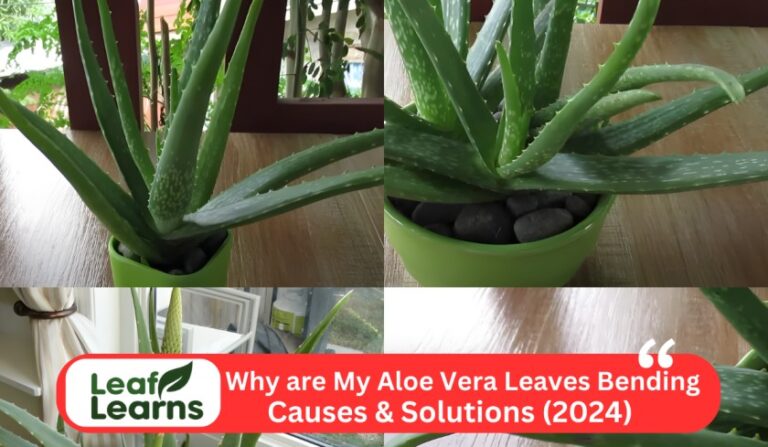What is Acidic Soil – Causes, Impacts, and Solutions (2023)
The pH of the soil determines the acidic soil or alkalinity of soil, which is crucial for plant growth. A soil with a pH below 7.0 hinders plant growth by reducing nutrients uptake and increasing aluminum toxicity. Plant health depends on understanding soil pH.
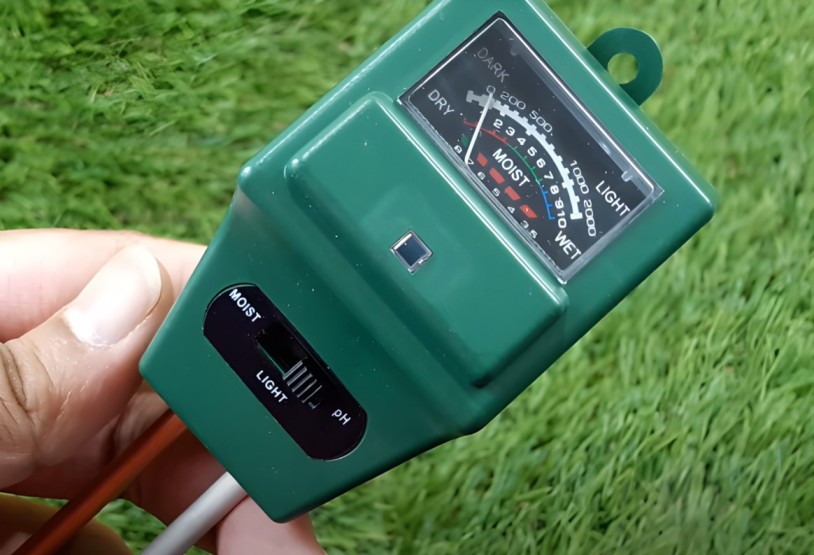
Importance of Understanding Soil pH
- Plant accessibility of nutrients depends on soil pH, which affects their solubility. Acidity soils restrict plant growth and inhibit root growth by limiting the availability of nutrients such as phosphorus, calcium, magnesium, and aluminum.
- It disrupts nutrient cycling and compromises soil structure when acidic conditions prevail. By keeping soil pH (6.0-7.0) neutral or slightly acidic, microbial activity is promoted, ensuring nutrient availability.
- The uptake of essential nutrients can be restricted by acidity soil, leading to stunted growth, chlorosis (yellowing of leaves), and lower yields. Plant growth is enhanced when soil pH is understood and appropriate amendments, such as liming, can be applied.
| Property | Description |
|---|---|
| pH Level | Below 7 (typically ranging from 4 to 6.9) |
| Composition | High concentration of hydrogen ions (H+) |
| Common Acids | Sulphuric acid, hydrochloric acid |
| Nutrient Availability | Reduced availability of essential nutrients like calcium, magnesium, and phosphorus |
| Plant Adaptation | Acid-loving plants (acidophiles) thrive, while some crops may struggle |
| Common Issues | Aluminum and manganese toxicity may occur |
| Soil Color | Often has a reddish or yellowish tint |
| Organic Matter | Decomposition is slower due to acidity |
| Microbial Activity | Microbial diversity may be lower |
| Amendment | Lime can be added to raise pH and reduce acidity |
| Crops Tolerant | Blueberries, azaleas, rhododendrons, and pine trees are often more tolerant |
Contents
- 1 What Are Acid Soils?
- 2 What Makes Soil Acidic?
- 3 Is Your Soil Acidic?
- 4 What Causes Acidic Soil?
- 5 Impact of Acidic Soil on Plant Growth
- 6 Management Strategies for Acidic Soil
- 7 How to Test Soil Acidity
- 8 How to Make Soil More or Less Acidic
- 9 Plants for Acidic vs. Alkaline Soil
- 10 Types of Soil Acidity
- 11 Effect of Soil Acidity on Plant Nutrient Availability
- 12 How Acidity Affects Plant Growth
- 13 Soil pH as a Measure of Acidity
- 14 Why Soils are Becoming More Acidic
- 15 What Happens in Acid Soils
- 16 Pros and Cons of Acidic Soil
- 17 Treatment or Ways to Fix Soil Acidity
- 18 Why is Acidic Soil Bad for My Lawn?
- 19 How to Correct Acidic Soil?
- 20 Addressing the Causes and Characteristics of Acidic Soil
- 21 Implementing Solutions and Management Strategies for Soil Acidic
- 22 FAQs
What Are Acid Soils?
A soil with an acidic pH level is one that has a pH value below 6.5. Soils with an acidic pH are more acidic than neutral soils with a pH of 7.0. In the United States, Canada, Europe, and Asia, acid soils are common.
The H+ concentration in soil solutions determines its acidity. Using the pH scale, you can tell where soils are acidic or alkaline based on the concentration of H+ ions.
A pH range of 6.0 to 7.5 is best for most plants, but some can tolerate acidic or alkaline conditions.
Characteristics
The characteristics of acid soils make them different from other soil types. These characteristics include:
- The pH of acid soils is less than 6.5.
- The soil in acidic environments often contains high levels of aluminum, which is toxic.
- Plants have difficulty absorbing nutrients in acidic-soils, such as calcium, magnesium, and phosphorus.
Importance in Agriculture and Gardening
Farmers and gardeners can struggle with acid soils. To improve plant growth and manage acid soils, several things can be done. These practices include:
- Raising the pH level of soil by adding calcium carbonate.
- Plants can benefit from organic matter, such as compost or manure, since it improves soil structure.
- The right plants for acidic conditions: There are many species that can tolerate acid. Araleas, rhododendrons, and blueberries are among them.
What Makes Soil Acidic?
In addition to nutrient availability, soil acidity is an important measure of hydrogen ion concentration. Acidity plays a critical role in land management and gardening, as some plants thrive in acidic conditions.
Factors Contributing to Soil Acidity
- As a result of heavy rainfall, calcium, magnesium, and sodium are leached out through the soil. An acidic-soil profile results from this leaching process.
- humic and fulvic acids are released by organic matter when it decomposes, contributing to soil acidity. Over time, these acids can significantly lower soil pH, but they are generally weak.
- Fertilizers containing nitrogen, particularly ammonium, can cause soil acidification when overused. Nitrogen ions are released during nitrification, when ammonium is converted to nitrate.
Balancing Soil pH for Optimal Plant Growth
For optimal plant growth, soil pH should be neutral. To neutralize acidity and increase nutrient uptake, liming agents like calcium carbonate or magnesium carbonate can be applied. Lower pH levels can be achieved by using sulfur or aluminum sulfate for alkaline soils.
The pH of the soil impacts plant nutrition. The availability of phosphorus and molybdenum is limited in acidity soils. Plant growth can be stunted due to nutrient deficiencies.
Is Your Soil Acidic?
Signs and Symptoms
Plant growth can be affected by acidity of soil. If your soil is acidic, here are some signs:
- Yawning leaves are a sign of iron deficiency, caused by acidity of soil.
- Having this type soil keeps plants from growing as quickly or as tall.
- Plants can have difficulty absorbing nutrients such as nitrogen and phosphorus in acidity of soil.
Importance of Soil Testing
Have your soil tested to find out if it’s acidic. A soil test kit can be purchased from a garden center or at your local Extension office.
Soil pH Levels
pH scale ranges from 0-14. The pH value of 7 is neutral. An acidic-soil has a pH below 7, while an alkaline soil has a pH above 7.
Your soil can be raised by adding lime if it is acidic. Soil acids can be neutralized by lime. Lime can be purchased at garden centers.
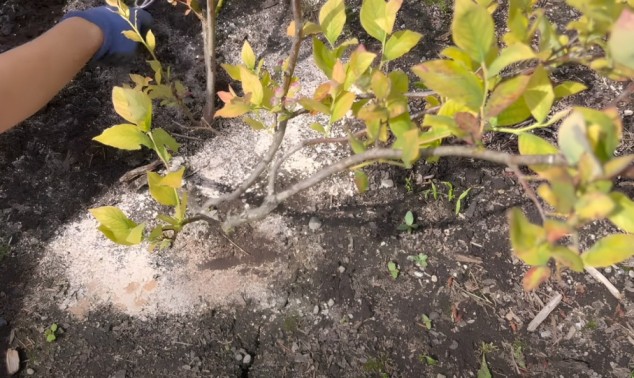
What Causes Acidic Soil?
Rainfall and Leaching
Acidification of soil can be caused by rainfall, a seemingly innocuous phenomenon.
Through rainwater percolation and percolation, essential base cations like calcium and magnesium are carried away, leaving behind hydrogen ions that are the primary cause of soil acidity.
Water rapidly moves through soil profiles in regions with high rainfall and sandy soils. This process is called leaching.
Acidic Parent Material
In addition to its parent material, soil’s acidity can also be determined by its nature. Acidic minerals in parent materials, such as granite or sandstone, gradually lower soil pH as they weather.
Organic Matter Decay
Fertility is often attributed to organic matter, which decays from plants and animals. Acidity is also caused by organic matter breakdown.
Humic and fulvic acids, released by organic compounds as they decompose, increase the soil’s hydrogen ion concentration. Soil acidity can be managed by regenerating organic matter, which is essential for soil structure.
Harvest of High Yielding Crops
A substantial amount of nutrients is often required to cultivate high-yielding crops.
When nutrients are removed through crop harvesting, particularly calcium, magnesium, and potassium, the soil becomes more acidic.
An intensive agricultural system harvesting large amounts of crops each year is particularly susceptible to this effect.
Nitrification of Ammonium
In addition, nitrogen-based fertilizers, especially those containing ammonium ions, can increase soil acidity.
In soil microorganisms, ammonia-based fertilizers undergo nitrification after application, converting ammonium into nitrate.
If ammonium-based fertilizers are misused or overused, hydrogen ions are released in the soil, increasing soil acidification.
Impact of Acidic Soil on Plant Growth
In acidity of soil, plants can’t access essential nutrients, such as calcium, magnesium, and phosphorus. In order for plants to grow and develop, these nutrients are essential.
The nutrients become less soluble in acidic-soil, so they are less available to plants. As a result, plant growth can be stunted and yields can be reduced due to nutrient deficiencies.
Aluminum Toxicity
Almost all soils contain aluminum, an element that naturally occurs. Soils that are acidic, however, become more soluble in it. Aluminum can be toxic to plants when it dissolves in soil.
There is a risk of aluminum toxicity damaging plant roots, inhibiting nutrient uptake, and inhibiting plant growth due to aluminum toxicity.
Microbial Activity
It is essential for plant growth to have soil microbes. Organic matter is broken down, nutrients are released, and soil structure is improved by them.
Soil microbes can, however, be harmed by acidity of soil. Too acidic soil kills some microbes, while it reduces the activity of others. Plants may find it more difficult to grow in this environment since soil fertility is reduced.
Management Strategies for Acidic Soil
Farmers and gardeners can encounter a lot of difficulty when dealing with acidic-soil. Plants can be restricted in their growth, and they can also have difficulty absorbing nutrients from the soil.
It is fortunately possible to improve this soil by implementing a variety of management strategies.
Liming as a Solution
Liming is one of the most effective and common methods of improving acidity of soil. Calcite (CaCO3) in lime neutralizes soil acids by neutralizing calcium carbonate (CaCO3).
In addition to agricultural lime and industrial lime, dolomitic lime is also available. Depending on your soil type and desired pH level, you will choose a particular type of lime.
Organic Amendments
Organic amendments include compost, manure, and green manure, which are derived from plants or animals.
An organic amendment improves the structure of the soil and improves its ability to hold water. Nutrients are also slowly released into the soil by organic amendments, thus reducing leaching.
Acidic-soil can be improved more sustainably with organic amendments than by liming. Lime can be applied more quickly and cheaper, but organic amendments can be more time-consuming and expensive.
Plant Selection Strategies
Choosing plants that will tolerate acidity of soil is important when planting in acidic-soil. Blueberries, azaleas, rhododendrons, and rhododendrons all thrive in this soils.
How to Test Soil Acidity
You can significantly improve your gardening success by understanding pH levels.
Importance of Regular Soil Testing
Regular soil testing is essential for several reasons:
- A pH range that is optimal for plant growth. pH imbalances can inhibit plant growth, which can be corrected with testing.
- Availability of nutrients depends on soil pH. Acidity of soil can block nutrients, while alkaline soils can prevent them from being absorbed.
- In slightly acidic to neutral soils, beneficial soil microbes decompose and cycle nutrients. Maintaining a healthy microbiome requires testing.
- Runoff and water quality can be affected by soil pH imbalances. Environmental harm can be prevented by understanding soil pH.
DIY Soil Testing Methods
Several DIY methods can provide an approximate indication of soil pH:
- Try the vinegar test by adding soil to vinegar. See if it fizzes or bubbles. Fizzing indicates alkalinity; no reaction indicates acidity.
- A tablespoon of soil with water makes a baking soda test. Sprinkle baking soda on. Ffizzing indicates acidity; no reaction indicates alkalinity.
- Take the juice from red cabbage and boil it. Soil and cabbage juice equal parts. A cabbage juice pH chart shows the color change.
However, DIY methods are less accurate than professional testing, despite being quick and inexpensive.
Professional Soil Testing
Consider professional soil testing services for more detailed soil analysis:
- A soil testing kit includes pH strips or vials available at home and garden stores. For accurate results, follow the instructions closely.
- Comprehensive soil testing is available from agricultural laboratories, cooperative extension offices, and private companies. A pH test, nutrient analysis, and other tests are performed.
How to Make Soil More or Less Acidic
However, some plants prefer more acidic or alkaline conditions.
Limestone Application
By adding limestone to your soil, you can raise its pH level if it is too acidic. In limestone, calcium carbonate neutralizes acids, which is why it is a natural rock.
In addition to ground limestone and pelletized limestone, dolomitic limestone is also available. Your soil’s specific needs will determine the type of limestone you should use.
If you are covering your garden bed with limestone, spread it evenly and then work it into the soil to a depth of 6 to 8 inches.
Your soil’s acidity will determine how much limestone you need. A cooperative extension office can test your soil to determine how much limestone you need.
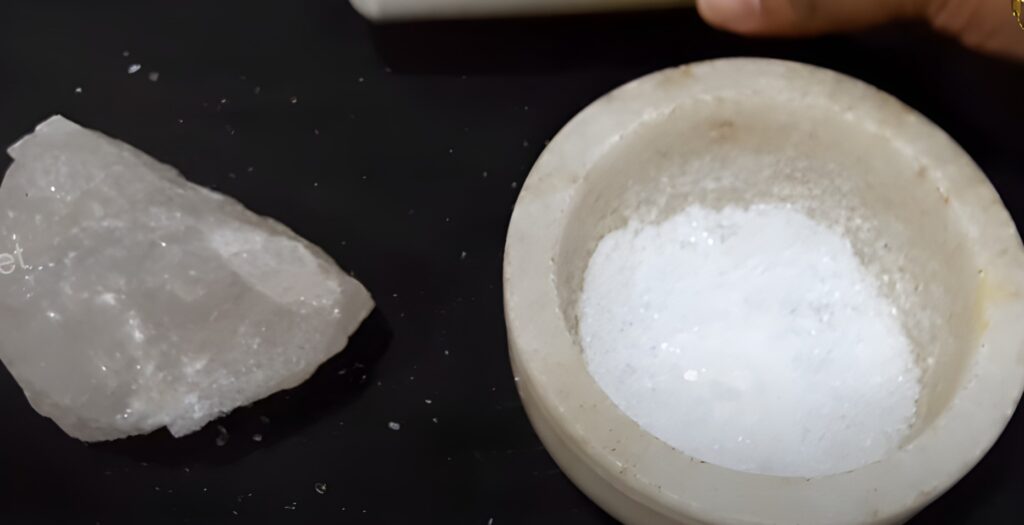
Wood Ashes as Amendments
The pH level of soil can also be raised by using wood ashes. An acidic substance containing potassium carbonate is contained in wood ashes.
In addition to containing salts, wood ash should be used in moderation because it contains high levels of salts.
Using wood ashes in your garden bed is as simple as spreading them evenly over the soil and working them in to a depth of four to six inches. Plant roots can be burned by wood ashes.
Compost and its Role in Soil pH
You can improve the soil health by composting, and you can also buffer the pH level with compost. Biologically decomposed organic materials are compost. Soil nutrients can help plants grow when these materials are applied.
As well as humic acid, compost contains humic acid, which binds soil particles. Moisture and nutrients are retained, making the soil more resistant to erosion.
You can use compost to amend your soil by spreading it evenly on the surface and then working it in 2 to 3 inches deep. Potting mixes can also include compost.
Plants for Acidic vs. Alkaline Soil
| Property | Acidic-Soil | Alkaline Soil |
| pH Range | Below 7 | Above 7 |
| Common pH Levels | 4.0 – 6.9 | 7.1 – 14.0 |
| Nutrient Availability | Some nutrients may be less available | Some nutrients may be less available |
| Common Causes | Rainfall, organic matter decay, nitrogen-based fertilizers | Limestone presence, arid climates, certain minerals |
| Plant Preference | Azaleas, Blueberries, Rhododendrons | Lilacs, Boxwoods, Sweet Peas |
| Impact on Plant Growth | May hinder nutrient uptake and growth | May lead to nutrient imbalances |
| Indicator Plants | Hydrangeas turning blue in acidic conditions | Hydrangeas turning pink in alkaline conditions |
| Amendments | Lime, wood ashes, compost | Sulfur, peat moss, pine needles |
| Soil Texture | Varies with other factors, not solely dependent on pH | Varies with other factors, not solely dependent on pH |
| Common Crops | Potatoes, Blueberries, Cranberries | Spinach, Beets, Broccoli |
| Effect on Microorganisms | May affect microbial activity | May influence microbial diversity |
| Water Solubility | Some minerals may be more soluble | Some minerals may be less soluble |
Types of Soil Acidity
There are three types of Acidity Soil
Active Acidity
In soil solutions, active acidity describes the amount of hydrogen ions present. It is the most readily available form of soil acidity that is directly measured using a pH meter.
In addition to nutrient availability, active acidity influences microbial activity and aluminum toxicity.
Exchangeable Acidity
Second, exchangeable acidity is characterized by aluminum and hydrogen ions on soil particles. A process known as cation exchange allows these ions to exchange with calcium or magnesium.
Soil acidity is maintained over time by exchangeable acidity, not directly measurable with a pH meter.
Reserve Acidity
Minerals in the soil parent material store reserve acidity, the least readily available form of soil acidity.
Minerals weather and release hydrogen ions, contributing to soil acidity while not directly affecting pH. Keeping soil pH stable is dependent on reserve acidity acting as a buffer.
Effect of Soil Acidity on Plant Nutrient Availability
The pH of the soil can significantly affect nutrient availability, resulting in stunted growth, low yields, and even plant death when it drops below or rises above this range.
Phosphorus, Potassium, and Calcium Uptake
Among the macronutrients plants need most are phosphorus, potassium, and calcium. Acidity greatly influences their availability.
The availability of phosphorus to roots decreases in acidity of soil (pH below 6.0). Insoluble compounds such as iron and aluminum phosphates prevent plants from absorbing phosphorus.
Consequently, phosphorus deficiency hinders growth, roots develop poorly, and flowers open late.
In addition, soil acidity affects potassium uptake. Acidic-soils reduce potassium availability by leaching out of root zones. This soils may also have aluminum ions that compete with potassium for uptake.
Plants with low potassium can suffer from weak stems, yellowing leaves, and poor fruit quality.
Acidity of soil (pH around 6.5) have higher calcium availability than neutral or alkaline soils.
Plants don’t have access to calcium in very acidic soils (pH below 5.5) due to leaching or aluminum complexation. Growth is stunted, cell walls become weak, and diseases are more likely to spread.
Micronutrient Availability
A plant’s growth and health depend on micronutrients, even though they are in smaller amounts. As well as soil acidity, they are also available.
Photosynthesis and chlorophyll production require iron, an essential micronutrient. Soils with acid become more soluble and available to plants. Despite this, excess iron can stunt plant growth and lead to leaf chlorosis.
In addition to photosynthesis and nitrogen metabolism, manganese is an essential micronutrient in plants. The availability of manganese increases in acidic-soils. Excess manganese can, however, damage leaves and reduce growth.
Among legumes, molybdenum plays an essential role in nitrogen fixation. A pale green leaf and poor nodulation are symptomatic of nitrogen deficiency in acidity soil
Identifying Acid Soils
Visual Signs: Observe stunted growth, yellowing leaves, and moss growth. There are often specific characteristics of acidic-soils that can be observed by those with keen eyes.
Soil Testing Procedures: Conducting soil tests is crucial. To determine the exact pH levels and corrective actions, use pH testing kits or send samples to laboratories.
Common Acid-Prone Regions: Identify areas that are prone to acidity, such as rainy regions or regions with conifers, to enable proactive soil management.
How Acidity Affects Plant Growth
Root Development
Root development is challenging in acidic soils. Water absorption is limited when hydrogen ions (H+) are present in high concentrations. Plants cannot anchor themselves in the soil and access essential nutrients as a result of stunted root growth.
Photosynthesis and Energy Production
Plants convert sunlight into energy through photosynthesis, which is affected by soil acidity.
Chlorophyll is responsible for capturing light when soil pH is too low, thereby reducing magnesium and phosphorus availability. Therefore, photosynthesis slows down, which limits the plant’s ability to grow and develop.
Overall Plant Health
Plants can become toxic when aluminum and manganese are soluble in acidic-soils. Root cells can be damaged, nutrients can be disrupted, and plant functions impacted. Further compromising plant health are acidity of soils that harbor harmful pathogens.
Soil pH as a Measure of Acidity
pH scale: Soil pH is measured from 0 to 14 on a scale of acidity or alkalinity. A lower value indicates an acidic environment, while a higher value indicates an alkaline environment.
It is important to know what pH range is optimal for different crops. It is essential that soil pH be understood and adjusted in order for diverse plants to flourish.
Microorganisms: The pH of soil significantly affects the diversity and activity of essential microorganisms, which are crucial to the nutrient cycle and to soil health. It is important to maintain a balanced pH in your garden to ensure a healthy ecosystem.
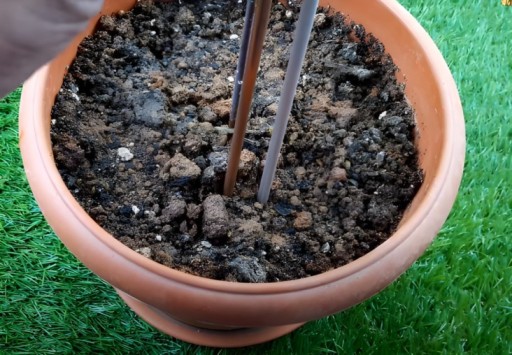
Why Soils are Becoming More Acidic
The increasing use of nitrogen-based fertilizers and industrial emissions causes soil acidification. Environmental factors change soil composition, such as deforestation.
Ecosystems could be harmed and nutrient availability may be compromised in the long term.
For sustainable land management, ensuring harmony between humans and the environment, it is crucial to understand and address these dynamics.
What Happens in Acid Soils
Plants are unable to access essential elements in acidity of soils due to the leaching of nutrients. Plant roots are exposed to toxicity risks due to an intensification of aluminum release.
A disturbed soil ecosystem affects nutrient cycling due to microbial changes.
By understanding these dynamics, gardeners can implement specific amendments and ensure their plants thrive in a balanced environment. Understand the subtleties of acidic soils so you can optimize your garden.
Pros and Cons of Acidic Soil
Challenges for Plant Growth
It is difficult for plants to grow in acidic-soil. Induced aluminum toxicity, reduced nutrient availability, and reduced microbial activity all have the potential to stunt plant development and reduce yields.
As a result, crops are further stressed by acidic conditions, which can limit water penetration and uptake.
Benefits for Specific Crops
Even though acidity soil poses challenges, some crops benefit from it. Among the plants that thrive in acidic environments are rhododendrons, azaleas, and blueberries.
Adapted to acidic-soil, these plants are capable of extracting nutrients and absorbing aluminum.
Balancing Act in Soil Management
A balance must be struck when managing acidity of soil. Providing acidity soil conditions with liming agents is a great way to increase crop production.
Plants that prefer acid can be damaged by excessive liming, however. To manage soil effectively, it is important to understand specific crops’ pH preferences.
Treatment or Ways to Fix Soil Acidity
| reatment or Ways to Fix Soil Acidity | Description |
|---|---|
| Limestone Application | Use limestone to gently increase pH levels. This time-tested method reverses acidic soil, promoting plant health by neutralizing acidity. |
| Wood Ashes as Amendments | Utilize wood ashes to counteract soil acidity. These nutrient-rich amendments not only balance pH but also contribute essential minerals to the soil. |
| Compost and Organic Matter | Transform your soil with the organic magic of compost. This nutrient-rich soil amendment helps create lush and vibrant gardens, supporting plant growth and health. |
Why is Acidic Soil Bad for My Lawn?
Grass and turf growth can be negatively affected by acidic-soil, resulting in yellowing and stunting. There is a compromise in nutrient uptake, which affects the health of the lawn as a whole.
There are several factors that contribute to soil acidification in lawns, including heavy rainfall, decomposition of organic matter, and nitrogen fertilizers.
Adding lime to acidity soil, incorporating organic matter, and selecting grass varieties tolerant of low pH levels are some lawn care tips for acidic-soils. In order to ensure optimal lawn conditions, soil testing should be conducted regularly.
How to Correct Acidic Soil?
A customized approach is required for correcting acidity soil. Use tailored solutions for different crops — lime for neutralizing or specific amendments.
Integrate organic matter into your soil to enhance soil structure as well as balance pH. In order to gauge effectiveness, soil pH should be checked regularly.
Maintaining soil health requires a nuanced approach, whether you’re growing blueberries or flowers. Invest in soil amendments, monitor changes, and watch a thriving foundation transform into a rich, diverse ecosystem.
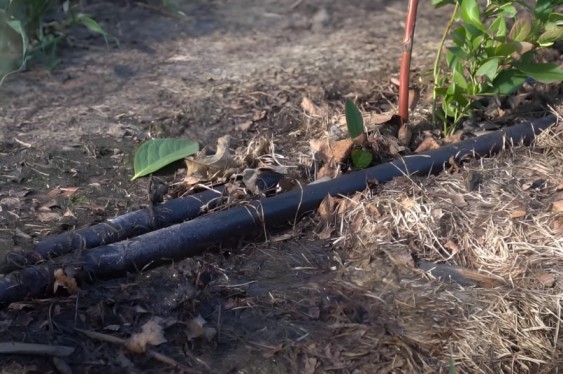
Addressing the Causes and Characteristics of Acidic Soil
An acidic-soil can be improved upon by implementing various strategies to address its causes and characteristics. The causes of acidity of soil include factors like rainfall and leaching, decay of organic matter, the use of nitrogen-based fertilizers, and the presence of acidic parent material.
These processes contribute to the formation of acidity of soil, characterized by lower pH levels and potential impacts on plant growth. Identifying and testing acidic-soil is crucial for effective management.
Home gardeners can check for signs of acidity, conduct soil pH tests, and understand the characteristics associated with soil acidic, such as poor nutrient availability and altered electrical conductivity. Understanding what makes soil acidic is the key to implementing targeted solutions.
Implementing Solutions and Management Strategies for Soil Acidic
Solutions and management strategies for acidity of soil involve corrective measures to make soil more conducive for plant growth. Techniques include adding amendments such as limestone, wood ashes, or compost to neutralize soil acidity.
These amendments aid in correcting pH levels and improving nutrient availability. Purchasing and using Soil acidic amendments are common practices, with various brands and options available at garden centers and home improvement stores.
Environmental factors, such as increasing soil acidity over time, emphasize the need for sustainable management practices. This involves considering the impact of rainfall, leaching, and other influences on soil fertility.
With a comprehensive understanding of these factors, gardeners can adopt informed strategies to neutralize, correct, and manage acidic soils effectively.
FAQs
How do I make my soil acidic?
Making your soil acidic can be accomplished in a few ways. Organic matter such as pine needles or coffee grounds can be added to the soil, or you can use sulfur, aluminum sulfate, or sulfuric acid. A commercial soil acidifier is also an option
What are the signs of acidic soil?
Your soil may be acidic if it displays a few of the following signs. These include:
- Poor plant growth
- Yellowing or stunted leaves
- Mosses and lichens growing on the soil
- A pH level of 6.5 or below
Is it good to have acidic soil?
Having acidity soil does not necessarily mean that it is good or bad. You need to know what kind of plants you are growing. It is better for some plants to grow in acidity of soil, such as blueberries and azaleas. Beans and corn, on the other hand, prefer alkaline or neutral soil.
What is acidify soil?
Soil acidification refers to lowering the soil’s pH level. Organic matter or sulfur can be added to the soil to achieve this effect.
What fertilizer is acidic?
It is possible to make soil acidic by using some fertilizers. These include:
- Ammonium sulfate
- Aluminum sulfate
- Iron sulfate
What fertilizer makes soil acidic?
It is possible for soil to become acidic when fertilized with ammonium or aluminum fertilizers. Due to the fact that ammonium and aluminum ions can bind with hydrogen ions in the soil, pH levels in the soil are lowered.
Is clay soil acidic?
There are times when clay soil is acidic, but not all of the time. It is important to note that clay soil pH levels can be affected by many factors, including clay type, soil organic matter, and climate.
Which plants grow in acidic soil?
Acidity of soil is conducive to the growth of many plants. Some of these plants include:
- Azaleas
- Blueberries
- Camellias
- Gardenias
- Hydrangeas
- Rhododendrons
What pH level is acidic soil?
6.5 or lower is the pH level of acidic soil. It is recommended that most plants have a pH between 6.0 and 7.5.
Does urea make soil acidic?
It is not true that urea makes soil acidic. It is actually possible for urea to help raise the pH of soil. Ammonia, which is a base, is formed when urea is broken down.
How is acidic soil treated?
There are a few ways to treat acidic soil. These include:
- Adding lime to the soil
- Growing acid-loving plants
- Using a commercial soil acidifier
How do I make my houseplant soil acidic?
The soil of your houseplants can be made acidic in a number of ways. Adding organic matter such as pine needles or coffee grounds to the soil is another option, as is adding peat moss, aluminum sulfate, or aluminum oxide. Commercial soil acidifiers are also available.
What is the perfect range for acidic soils in gardening?
Generally, plants prefer soils with a pH range between 6.0 and 7.5. Acidic soils with pH ranges of 4.5 to 5.5, however, are preferred by plants like blueberries and azaleas.
How long will it take to decrease my soil’s acidity level?
The amount of sulfur or aluminum sulfate you add, as well as the climate, will determine how long it takes to decrease the acidity of your soil. You will likely see significant changes in your soil’s pH level after several months to a year.




